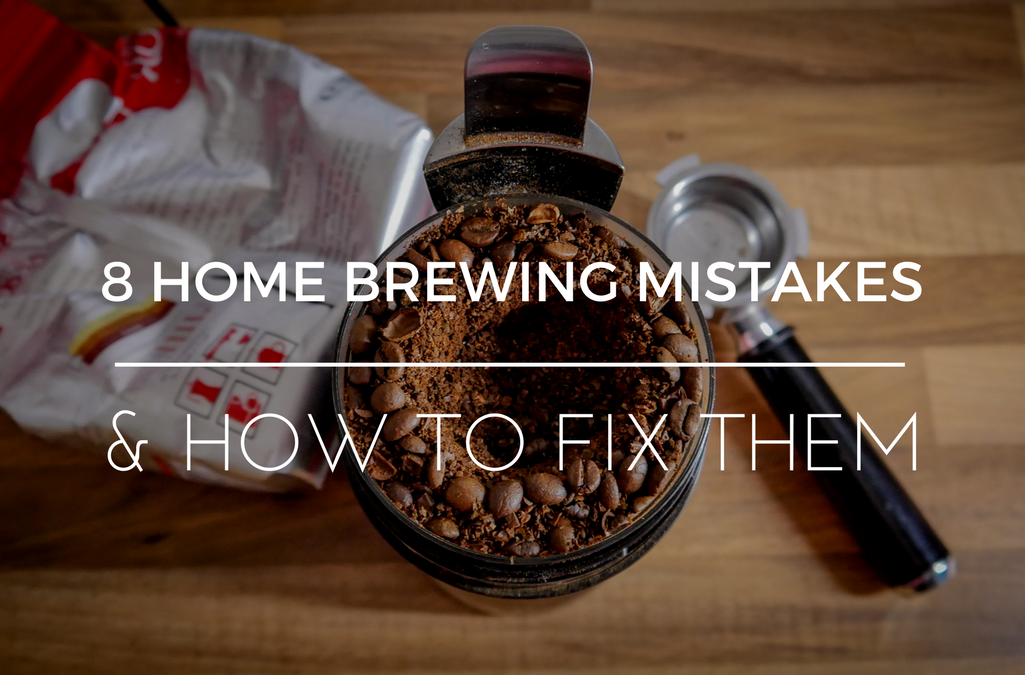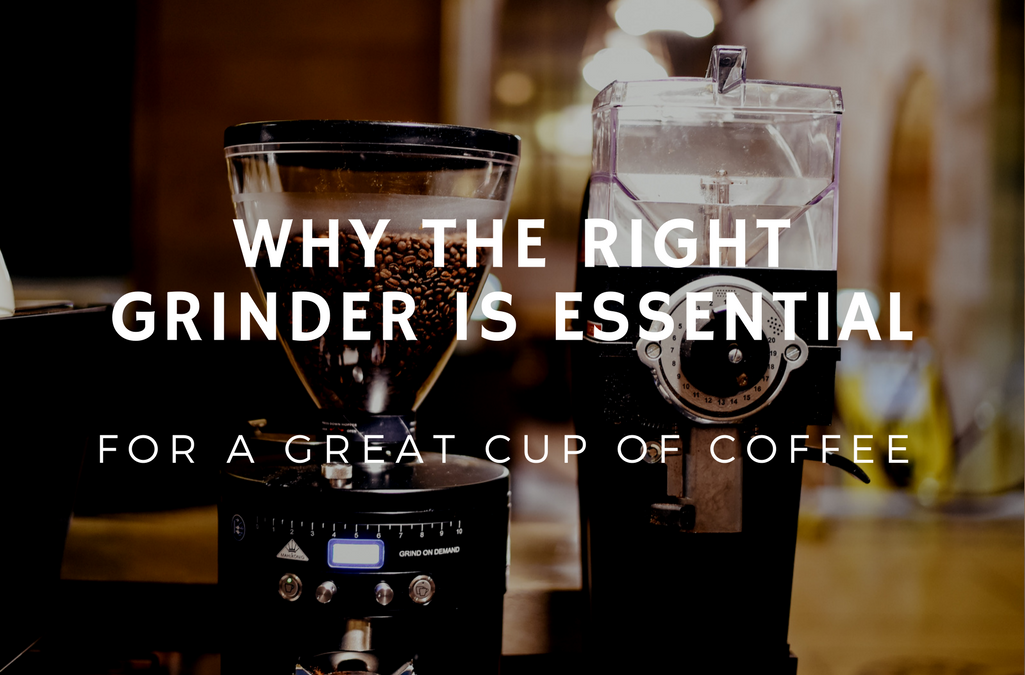The age of brewing quality coffee at home is well and truly upon us. No longer a mystical art practised only by baristas with handlebar moustaches, clock tattoos and French Bulldogs, the world of coffee is opening up to home brewers. Home brewing is a great way to explore your love for coffee and will absolutely save you money in the long run.
But the truth is, making coffee at home isn’t always as straightforward as grinding some beans, adding hot water and VOILA. We hate hearing when home brewers get discouraged after their first few coffees in their new machine aren’t as good as what they get at a local cafe. We put together a quick list of some common mistakes you can make when brewing your coffee at home and the simple fixes that will transform your coffee from mediocre to delicious.
1. GRIND SIZE & TECHNIQUE
Believe it or not, this is one of the most important factors that is often overlooked. Getting the grind right is critical to the end product and it is not uncommon for people new to home brewing to spend thousands on an espresso machine and then buy a $60 Bodum chopper.
Flip that scenario to a $150 Sunbeam espresso machine and a great grinder and you’ll find it easier to get a tastier result. There has been a lot of emphasis on a flashy looking espresso machine but the education around grinders is limited, so what exactly do you need to look for in a grinder?
Firstly, using a burr grinder is always recommended since it allows you to experiment with grind size until you achieve the perfect consistency. A burr grinder has cogs that adjust to get a finer or coarser grind which is even all over, whereas a blade grinder simply chops the coffee up into random sizes – leaving you with a grind that causes uneven flavour extractions. Since different brewing methods require different grind sizes, it’s best to use a burr grinder to ensure you get the right grind for your cup – every time.
However, any grinder is better than none. The moment coffee is ground, the delicious oils and flavours are released, so grinding as you go is preferable to ordering it preground (although we do cater for preground coffee customers) as the freshness is harder to maintain once ground.
2. WATER TEMPERATURE & QUALITY
The first cardinal sin of coffee brewing is burning it with boiling water. We all like a hot cup, but using just boiled water will burn the heck out of your coffee, giving you a bitter tasting drink. If you’re using a regular kettle for brewing, make sure you pour into a cool mug immediately, or if you pre-warm your cups, then wait a minute before pouring.
Using filtered water instead of tap water is another way you can ensure your coffee tastes the best – since it eliminates any tastes from your pipes and trace minerals that interfere with the taste of your coffee.
3. STORAGE & FRESHNESS
We know we go on about this, but proper storage of your coffee beans is ESSENTIAL. Especially if it takes you some time to get through a kilo of beans. Beans MUST be stored in an airtight container, and placed in a dark place with a stable temperature. Check out our full blog about coffee storage here for more info.It’s also best to buy your beans in the amount you know you’ll get through in 4-6 weeks, instead of buying in bulk to ensure they stay fresh and delicious.
4. GET YOUR RATIOS RIGHT
It can be really hard to know how much coffee to use and how much water. One day your coffee could be weak and the next too strong. The best thing you can do is invest in a scale and record the quantities you’re using, so you can dial down to what suits your tastebuds best. Back in the day, we used to just eyeball the amounts and still could come up with the best tasting coffee but that took a million coffees to perfect. The more turn-key way is to accurately measure both coffee in and coffee out with these simple guidelines:
Espresso
Recipe 1. 15g of coffee → 35 second extraction → ~35ml of liquid coffee
Recipe 2. 20g of coffee → 20 second extraction → 20ml of liquid.
Plunger
Recipe 1. 6g of coffee (about 1 teaspoon) per 100ml water. Boil water, quickly pour over the coffee in the plunger. Sit for 3 minutes then give a quick stir, plunge slowly over 30 seconds. Serve immediately.
Both are valid recipes and it comes down to the type of bean and your tastebuds. But if you stick to these guidelines then you have eliminated some variables and can focus on adjusting either your grind size or your tamping technique.
Read more about scales here
6. TAMPERS AND TAMPING TECHNIQUE
There are a million different tampers and it’s important that you get a nice solid one that fits your palm nicely and is heavy enough to give you a good amount of pressure when tamping your coffee. The tampers that come with regular espresso machines are usually good enough to get you started but if you are serious about your coffee (and we know you are) you should look to save for a proper one sooner rather than later. The best ones are the handcrafted (and customisable) Pullman Barista tampers. Don’t be put off by the hefty price tag, they are more than worth it! Not only do they look amazing and will be a talking point whenever someone comes over, they are extremely comfortable and the weight and balance will give you a much more precise tamp. Pullman also have a range of Nexus handles which are lower cost but still beautiful to use. Read more about tampers here.

Tamping technique is still argued over in the upper circles of the coffee world. But when you are moving from average coffee maker to excellent, here are a few tips:
Hold the portafilter level or use the side of the bench to keep it level whilst you tamp. If you don’t, it will end up being a sloped tamp and the water will flow down through the lowest area and you won’t get a nice even extraction.
Make sure you press firmly enough but not too hard that the water can’t get through. A good guide to use is your eyes. If you fill the basket with coffee to be in line with the top lip, when you have tamped the coffee should be pressed down to the small indented ring that goes around the edge of the basket about 5-6mm down. If your basket doesn’t have this ring, you’ll just have to guess what 5mm looks like.
Spin the tamper at the end of the press so that you polish the grind which interlocks the coffee creating resistance for the water flow.
Make sure there are no cracks or holes around the edges of the basket. When you lift your tamper out, if there are small cracks in the coffee the water is going to go straight down it and mess up your extraction.
7. CLEAN YOUR MACHINE
It’s surprising how much stale coffee, water and milk can get stuck up inside an espresso machine. Be sure to clean your machine regularly to avoid getting weird tastes that could possibly be harmful. This goes for every kind of brewer, make sure to unscrew the bottom of your plunger and clean every part of it to keep your coffee tasting the best.
8. MILKY MISTAKES
In our opinion, nothing tastes quite as good as regular old, full fat and creamy cow’s milk. But if you insist on bucking the traditional, here are a few things to know.
- Skim milk isn’t actually skinny. They make up for the missing fats with sugar, which will change the taste of your coffee.
- When steamed, A2 milk has a decidedly fishy taste, so be wary. People become accustomed to the taste but it’s a bit of a shock at first.
- Soy milk separates very quickly when steamed, so be careful and try different brands to see which is best. We think Bonsoy is hands down the top Soy milk on the market.
Our best advice here would be to try them all and record your findings until you discover what’s right for you and your tastebuds.
Anyone else would say the biggest mistake in home brewing coffee is buying poor quality beans, but we don’t have to tell you this! We take the guesswork out of quality by tasting and testing all of our beans, so we know the beans you are drinking are going to be delicious. Have a look at our most popular beans here.



